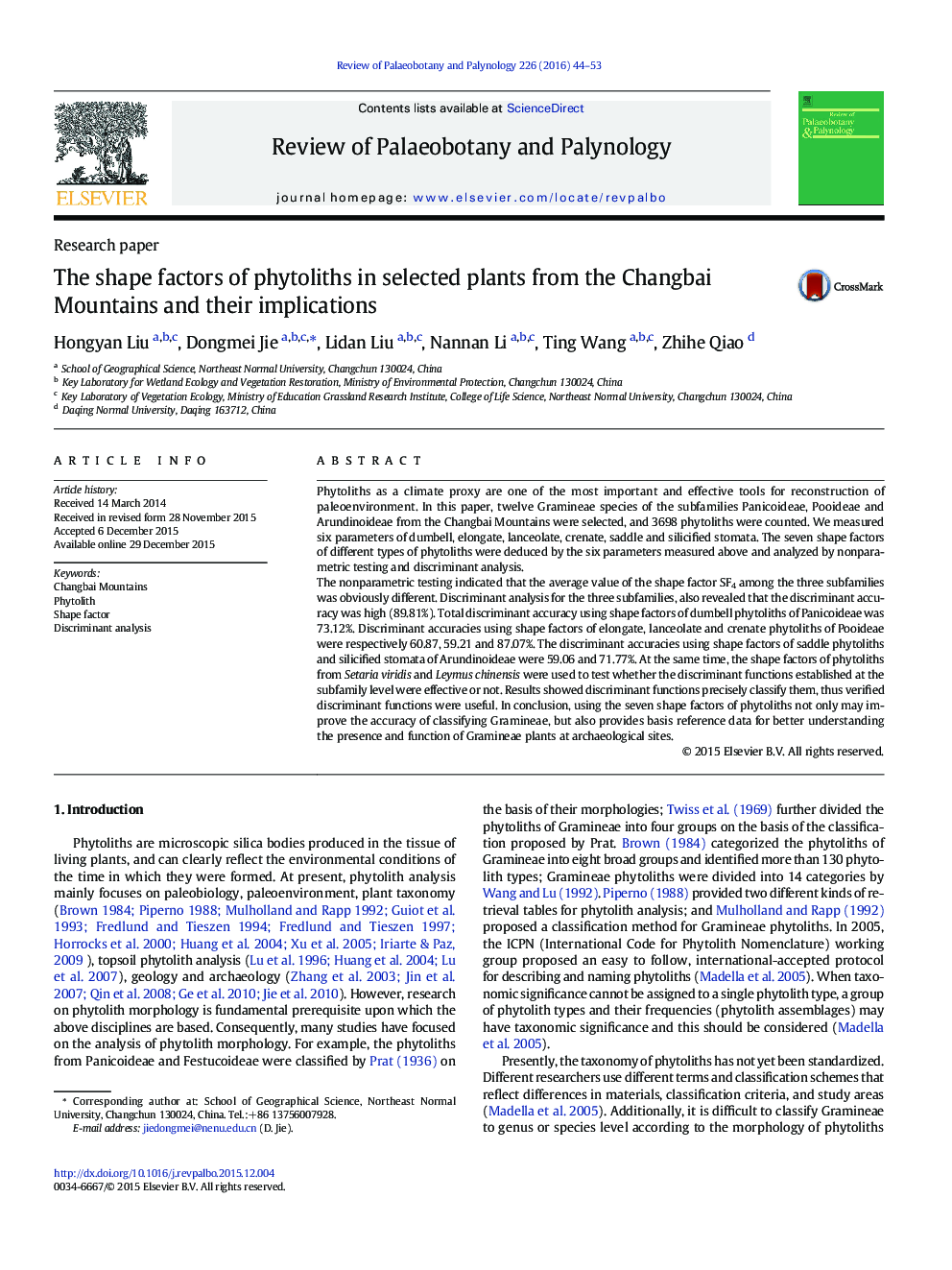| Article ID | Journal | Published Year | Pages | File Type |
|---|---|---|---|---|
| 6448626 | Review of Palaeobotany and Palynology | 2016 | 10 Pages |
Abstract
The nonparametric testing indicated that the average value of the shape factor SF4 among the three subfamilies was obviously different. Discriminant analysis for the three subfamilies, also revealed that the discriminant accuracy was high (89.81%). Total discriminant accuracy using shape factors of dumbell phytoliths of Panicoideae was 73.12%. Discriminant accuracies using shape factors of elongate, lanceolate and crenate phytoliths of Pooideae were respectively 60.87, 59.21 and 87.07%. The discriminant accuracies using shape factors of saddle phytoliths and silicified stomata of Arundinoideae were 59.06 and 71.77%. At the same time, the shape factors of phytoliths from Setaria viridis and Leymus chinensis were used to test whether the discriminant functions established at the subfamily level were effective or not. Results showed discriminant functions precisely classify them, thus verified discriminant functions were useful. In conclusion, using the seven shape factors of phytoliths not only may improve the accuracy of classifying Gramineae, but also provides basis reference data for better understanding the presence and function of Gramineae plants at archaeological sites.
Related Topics
Physical Sciences and Engineering
Earth and Planetary Sciences
Palaeontology
Authors
Hongyan Liu, Dongmei Jie, Lidan Liu, Nannan Li, Ting Wang, Zhihe Qiao,
